RBS 2012 Annual Report Download - page 256
Download and view the complete annual report
Please find page 256 of the 2012 RBS annual report below. You can navigate through the pages in the report by either clicking on the pages listed below, or by using the keyword search tool below to find specific information within the annual report.-
 1
1 -
 2
2 -
 3
3 -
 4
4 -
 5
5 -
 6
6 -
 7
7 -
 8
8 -
 9
9 -
 10
10 -
 11
11 -
 12
12 -
 13
13 -
 14
14 -
 15
15 -
 16
16 -
 17
17 -
 18
18 -
 19
19 -
 20
20 -
 21
21 -
 22
22 -
 23
23 -
 24
24 -
 25
25 -
 26
26 -
 27
27 -
 28
28 -
 29
29 -
 30
30 -
 31
31 -
 32
32 -
 33
33 -
 34
34 -
 35
35 -
 36
36 -
 37
37 -
 38
38 -
 39
39 -
 40
40 -
 41
41 -
 42
42 -
 43
43 -
 44
44 -
 45
45 -
 46
46 -
 47
47 -
 48
48 -
 49
49 -
 50
50 -
 51
51 -
 52
52 -
 53
53 -
 54
54 -
 55
55 -
 56
56 -
 57
57 -
 58
58 -
 59
59 -
 60
60 -
 61
61 -
 62
62 -
 63
63 -
 64
64 -
 65
65 -
 66
66 -
 67
67 -
 68
68 -
 69
69 -
 70
70 -
 71
71 -
 72
72 -
 73
73 -
 74
74 -
 75
75 -
 76
76 -
 77
77 -
 78
78 -
 79
79 -
 80
80 -
 81
81 -
 82
82 -
 83
83 -
 84
84 -
 85
85 -
 86
86 -
 87
87 -
 88
88 -
 89
89 -
 90
90 -
 91
91 -
 92
92 -
 93
93 -
 94
94 -
 95
95 -
 96
96 -
 97
97 -
 98
98 -
 99
99 -
 100
100 -
 101
101 -
 102
102 -
 103
103 -
 104
104 -
 105
105 -
 106
106 -
 107
107 -
 108
108 -
 109
109 -
 110
110 -
 111
111 -
 112
112 -
 113
113 -
 114
114 -
 115
115 -
 116
116 -
 117
117 -
 118
118 -
 119
119 -
 120
120 -
 121
121 -
 122
122 -
 123
123 -
 124
124 -
 125
125 -
 126
126 -
 127
127 -
 128
128 -
 129
129 -
 130
130 -
 131
131 -
 132
132 -
 133
133 -
 134
134 -
 135
135 -
 136
136 -
 137
137 -
 138
138 -
 139
139 -
 140
140 -
 141
141 -
 142
142 -
 143
143 -
 144
144 -
 145
145 -
 146
146 -
 147
147 -
 148
148 -
 149
149 -
 150
150 -
 151
151 -
 152
152 -
 153
153 -
 154
154 -
 155
155 -
 156
156 -
 157
157 -
 158
158 -
 159
159 -
 160
160 -
 161
161 -
 162
162 -
 163
163 -
 164
164 -
 165
165 -
 166
166 -
 167
167 -
 168
168 -
 169
169 -
 170
170 -
 171
171 -
 172
172 -
 173
173 -
 174
174 -
 175
175 -
 176
176 -
 177
177 -
 178
178 -
 179
179 -
 180
180 -
 181
181 -
 182
182 -
 183
183 -
 184
184 -
 185
185 -
 186
186 -
 187
187 -
 188
188 -
 189
189 -
 190
190 -
 191
191 -
 192
192 -
 193
193 -
 194
194 -
 195
195 -
 196
196 -
 197
197 -
 198
198 -
 199
199 -
 200
200 -
 201
201 -
 202
202 -
 203
203 -
 204
204 -
 205
205 -
 206
206 -
 207
207 -
 208
208 -
 209
209 -
 210
210 -
 211
211 -
 212
212 -
 213
213 -
 214
214 -
 215
215 -
 216
216 -
 217
217 -
 218
218 -
 219
219 -
 220
220 -
 221
221 -
 222
222 -
 223
223 -
 224
224 -
 225
225 -
 226
226 -
 227
227 -
 228
228 -
 229
229 -
 230
230 -
 231
231 -
 232
232 -
 233
233 -
 234
234 -
 235
235 -
 236
236 -
 237
237 -
 238
238 -
 239
239 -
 240
240 -
 241
241 -
 242
242 -
 243
243 -
 244
244 -
 245
245 -
 246
246 -
 247
247 -
 248
248 -
 249
249 -
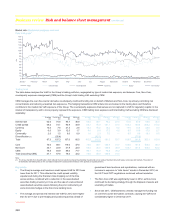 250
250 -
 251
251 -
 252
252 -
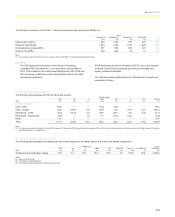 253
253 -
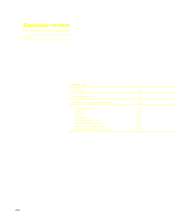 254
254 -
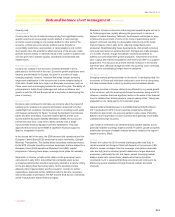 255
255 -
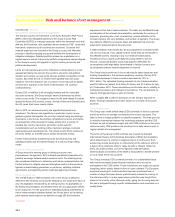 256
256 -
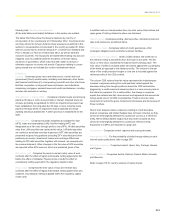 257
257 -
 258
258 -
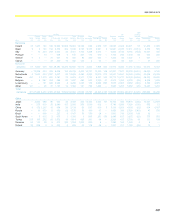 259
259 -
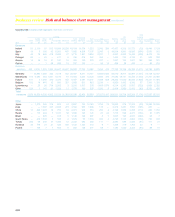 260
260 -
 261
261 -
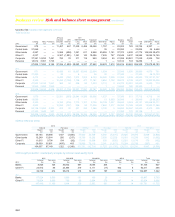 262
262 -
 263
263 -
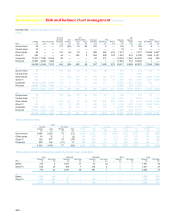 264
264 -
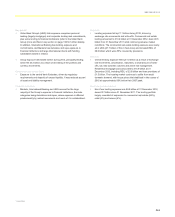 265
265 -
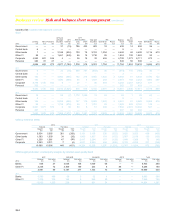 266
266 -
 267
267 -
 268
268 -
 269
269 -
 270
270 -
 271
271 -
 272
272 -
 273
273 -
 274
274 -
 275
275 -
 276
276 -
 277
277 -
 278
278 -
 279
279 -
 280
280 -
 281
281 -
 282
282 -
 283
283 -
 284
284 -
 285
285 -
 286
286 -
 287
287 -
 288
288 -
 289
289 -
 290
290 -
 291
291 -
 292
292 -
 293
293 -
 294
294 -
 295
295 -
 296
296 -
 297
297 -
 298
298 -
 299
299 -
 300
300 -
 301
301 -
 302
302 -
 303
303 -
 304
304 -
 305
305 -
 306
306 -
 307
307 -
 308
308 -
 309
309 -
 310
310 -
 311
311 -
 312
312 -
 313
313 -
 314
314 -
 315
315 -
 316
316 -
 317
317 -
 318
318 -
 319
319 -
 320
320 -
 321
321 -
 322
322 -
 323
323 -
 324
324 -
 325
325 -
 326
326 -
 327
327 -
 328
328 -
 329
329 -
 330
330 -
 331
331 -
 332
332 -
 333
333 -
 334
334 -
 335
335 -
 336
336 -
 337
337 -
 338
338 -
 339
339 -
 340
340 -
 341
341 -
 342
342 -
 343
343 -
 344
344 -
 345
345 -
 346
346 -
 347
347 -
 348
348 -
 349
349 -
 350
350 -
 351
351 -
 352
352 -
 353
353 -
 354
354 -
 355
355 -
 356
356 -
 357
357 -
 358
358 -
 359
359 -
 360
360 -
 361
361 -
 362
362 -
 363
363 -
 364
364 -
 365
365 -
 366
366 -
 367
367 -
 368
368 -
 369
369 -
 370
370 -
 371
371 -
 372
372 -
 373
373 -
 374
374 -
 375
375 -
 376
376 -
 377
377 -
 378
378 -
 379
379 -
 380
380 -
 381
381 -
 382
382 -
 383
383 -
 384
384 -
 385
385 -
 386
386 -
 387
387 -
 388
388 -
 389
389 -
 390
390 -
 391
391 -
 392
392 -
 393
393 -
 394
394 -
 395
395 -
 396
396 -
 397
397 -
 398
398 -
 399
399 -
 400
400 -
 401
401 -
 402
402 -
 403
403 -
 404
404 -
 405
405 -
 406
406 -
 407
407 -
 408
408 -
 409
409 -
 410
410 -
 411
411 -
 412
412 -
 413
413 -
 414
414 -
 415
415 -
 416
416 -
 417
417 -
 418
418 -
 419
419 -
 420
420 -
 421
421 -
 422
422 -
 423
423 -
 424
424 -
 425
425 -
 426
426 -
 427
427 -
 428
428 -
 429
429 -
 430
430 -
 431
431 -
 432
432 -
 433
433 -
 434
434 -
 435
435 -
 436
436 -
 437
437 -
 438
438 -
 439
439 -
 440
440 -
 441
441 -
 442
442 -
 443
443 -
 444
444 -
 445
445 -
 446
446 -
 447
447 -
 448
448 -
 449
449 -
 450
450 -
 451
451 -
 452
452 -
 453
453 -
 454
454 -
 455
455 -
 456
456 -
 457
457 -
 458
458 -
 459
459 -
 460
460 -
 461
461 -
 462
462 -
 463
463 -
 464
464 -
 465
465 -
 466
466 -
 467
467 -
 468
468 -
 469
469 -
 470
470 -
 471
471 -
 472
472 -
 473
473 -
 474
474 -
 475
475 -
 476
476 -
 477
477 -
 478
478 -
 479
479 -
 480
480 -
 481
481 -
 482
482 -
 483
483 -
 484
484 -
 485
485 -
 486
486 -
 487
487 -
 488
488 -
 489
489 -
 490
490 -
 491
491 -
 492
492 -
 493
493 -
 494
494 -
 495
495 -
 496
496 -
 497
497 -
 498
498 -
 499
499 -
 500
500 -
 501
501 -
 502
502 -
 503
503 -
 504
504 -
 505
505 -
 506
506 -
 507
507 -
 508
508 -
 509
509 -
 510
510 -
 511
511 -
 512
512 -
 513
513 -
 514
514 -
 515
515 -
 516
516 -
 517
517 -
 518
518 -
 519
519 -
 520
520 -
 521
521 -
 522
522 -
 523
523 -
 524
524 -
 525
525 -
 526
526 -
 527
527 -
 528
528 -
 529
529 -
 530
530 -
 531
531 -
 532
532 -
 533
533 -
 534
534 -
 535
535 -
 536
536 -
 537
537 -
 538
538 -
 539
539 -
 540
540 -
 541
541 -
 542
542 -
 543
543
 |
 |

254
Business review Risk and balance sheet management continued
Country risk continued
Governance, monitoring and management*
The Group’s country risk framework is set by the Executive Risk Forum
(ERF), which has delegated authority to the Group Country Risk
Committee (GCRC) to manage exposures within the framework and deal
with any limit breaches, with escalation where needed to ERF. Under this
framework, exposures to all countries are monitored. Countries with
material exposures are included in the Group’s country risk Watchlist
process to identify emerging issues and facilitate the development of
mitigation strategies. Detailed portfolio reviews are undertaken on a
regular basis to ensure that country portfolio compositions remain aligned
to the Group’s country risk appetite in light of evolving economic and
political developments.
Limits on total exposure are set for individual countries based on a risk
assessment taking into account the country’s economic and political
situation and outlook, as well as the Group’s portfolio composition in that
country. Sub-limits are set on medium-term (greater than one year)
exposure since this exposure can, by nature, not be reduced as rapidly
as short-term exposure in the event of deterioration of a country’s
creditworthiness.
During 2012, in addition to all emerging markets and the vulnerable
eurozone countries, the Group brought nearly all advanced countries
under country limits. The exceptions were the UK (and related European
special territories of Guernsey, Jersey, the Isle of Man and Gibraltar) and
the US, given their home country status.
Also in 2012, an enhanced country risk appetite framework was
introduced. The Group’s risk appetite for a particular country is now
guided by global risk appetite, the country’s internal rating and strategic
importance to the Group, the portfolio composition by tenors and clients,
an assessment of the potential for losses arising from a number of
possible key country risk events, and other country-specific
considerations such as funding profile, risk/return analysis, business
opportunities and reputational risk. The actual country limits continue to
be set by GCRC (or the ERF above certain benchmark levels).
Further enhancements included improved divisional country risk
operating models and the implementation of a new sovereign rating
model.
Eurozone crisis preparedness
A Group executive steering group is driving eurozone crisis
preparedness. Its agenda in 2012 included operational preparations for
possible sovereign defaults and/or eurozone exits. The steering group
also considered initiatives to determine and reduce redenomination risk.
Further actions to mitigate risks and strengthen control in the eurozone
typically included taking guarantees or insurance, updating collateral
agreements, and tightening certain credit pre-approval processes.
Redenomination risk
The overall impact of redenomination risk on the Group is difficult to
determine with certainty, but would be shaped by: the scope and reach of
any new legislation introduced by an exiting country; its applicability to
the facility documentation; and whether there are any appropriate offsets
to the exposures. For the purposes of estimating funding mismatches at
risk of redenomination (detailed below), the Group takes, as its starting
point balance sheet exposure as defined on page 255 and excludes
exposures at low risk of redenomination. The latter are identified through
consideration of the relevant documentation, particularly the currency of
exposure, governing law, court of jurisdiction, precise definition of the
contract currency (for euro facilities), and location of payment. The Group
also deducts offsets for provisions taken and liabilities that would be
expected to redenominate at the same time.
A redenomination event would also be accompanied by increased credit
risk, for two reasons. First, capital controls would likely be introduced in
the affected country, resulting in any non-redenominated assets,
including non-euro assets, potentially becoming harder to service.
Second, a sharp devaluation could imply payment difficulties for
counterparties with large debts denominated in foreign currency and
counterparties that are heavily dependent on imports.
The Group's focus continues to be on reducing its asset exposures and
funding mismatches in the eurozone periphery countries. During 2012,
total asset exposures to these countries decreased by 13% to
£59.1 billion. The estimated funding mismatch at risk of redenomination
was £9.0 billion for Ireland, £4.5 billion for Spain, and £1.0 billion for Italy
at 31 December 2012. These mismatches can fluctuate due to volatility in
trading book positions and changes in bond prices. The net positions for
Greece, Portugal and Cyprus were all minimal.
Refer to pages 256 to 280 for discussion on the Group’s exposure to
banks, financial institutions and other sectors in a number of eurozone
countries.
Credit default swaps
The Group uses credit default swap (CDS) contracts to service customer
activity as well as to manage counterparty and country exposure. The
latter is done to hedge portfolios or specific exposures. This may give rise
to maturity mismatches between the underlying exposure and the CDS
contract, as well as between bought and sold CDS contracts on the same
reference entity. CDS positions are monitored on a daily basis as part of
regular market risk management.
The terms of the Group’s CDS contracts are covered by standard
International Swaps and Derivatives Association (ISDA) documentation,
which determines if a contract is triggered due to a credit event. Such
events may include bankruptcy or restructuring of the reference entity or
a failure of the reference entity to repay its debt or interest. Under the
terms of a CDS contract, one of the regional Credit Derivatives
Determinations Committees of the ISDA is empowered to decide whether
or not a credit event has occurred.
The Group transacts CDS contracts primarily on a collateralised basis
with investment-grade global financial institutions who are active
participants in the CDS market. These transactions are subject to regular
margining, which usually takes the form of cash collateral. For European
peripheral sovereigns, credit protection has been purchased from a
number of major European banks, predominantly outside the country of
the reference entity. In a few cases where protection was bought from
banks in the country of the reference entity, giving rise to wrong-way risk,
this risk is mitigated through specific collateralisation and monitored on a
weekly basis.
*unaudited
